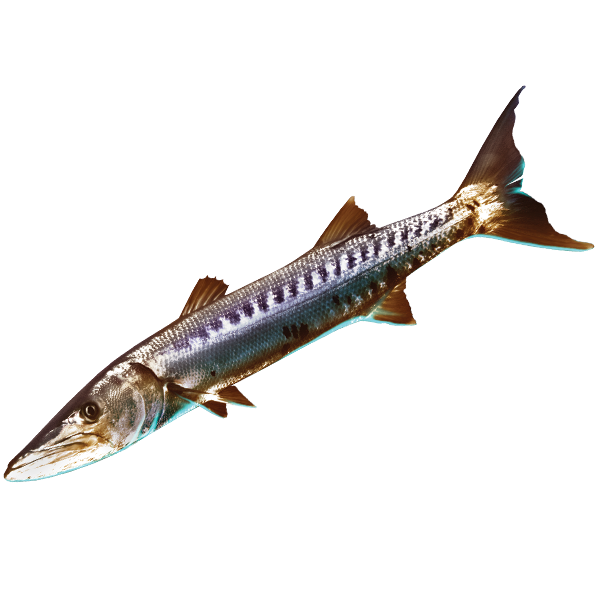Sphyraena barracuda
Great Barracuda
Maximum Size:
6 ft (2 m), 110 lb (100 kg)
Longevity:
Around 20 years.
Typical depth:
3–330 ft (1–100 m)
Behavior:
Barracuda are most active during the day, feeding on jacks, grunts, grouper, snapper, squid and even other barracuda. They are often solitary in nature, but occasionally school in large numbers. They have even been documented “herding” fish they plan on consuming.
Predators:
Sharks, tuna and large groupers.
Did you know?
Barracuda use their keen eyesight to hunt for food. They are one of the fastest fish in the ocean, capable of bursts of speed up to 48 kph (30 mph). Their speed, along with their two sets of razor sharp teeth, mean there are few prey capable of escaping a barracuda once it decides to attack.
WARNING!
Barracuda do not usually attack divers or snorkelers unless provoked, but there is evidence to suggest they may be attracted to objects that glint or shine, such as necklaces, watches or regulators, which they mistake for prey.
TREATMENT
The bite of the barracuda is not toxic but can produce a severe laceration or deep puncture wound. Exit the water as soon as possible and apply pressure to reduce the bleeding. The wound should be cleaned and a dressing applied. Medical attention may be necessary for severe bites, including sutures to close the wound and antibiotics to reduce the risk of infection.
MEDICAL DISCLAIMER
The treatment advice contained in this book is meant for informational purposes only and is not intended to be a substitute for professional medical advice, either in terms of diagnosis or treatment. Always seek the advice of your physician or other qualified health provider if you are injured by a marine organism. Never disregard professional medical advice or delay seeking it because of something you have read in this book.

